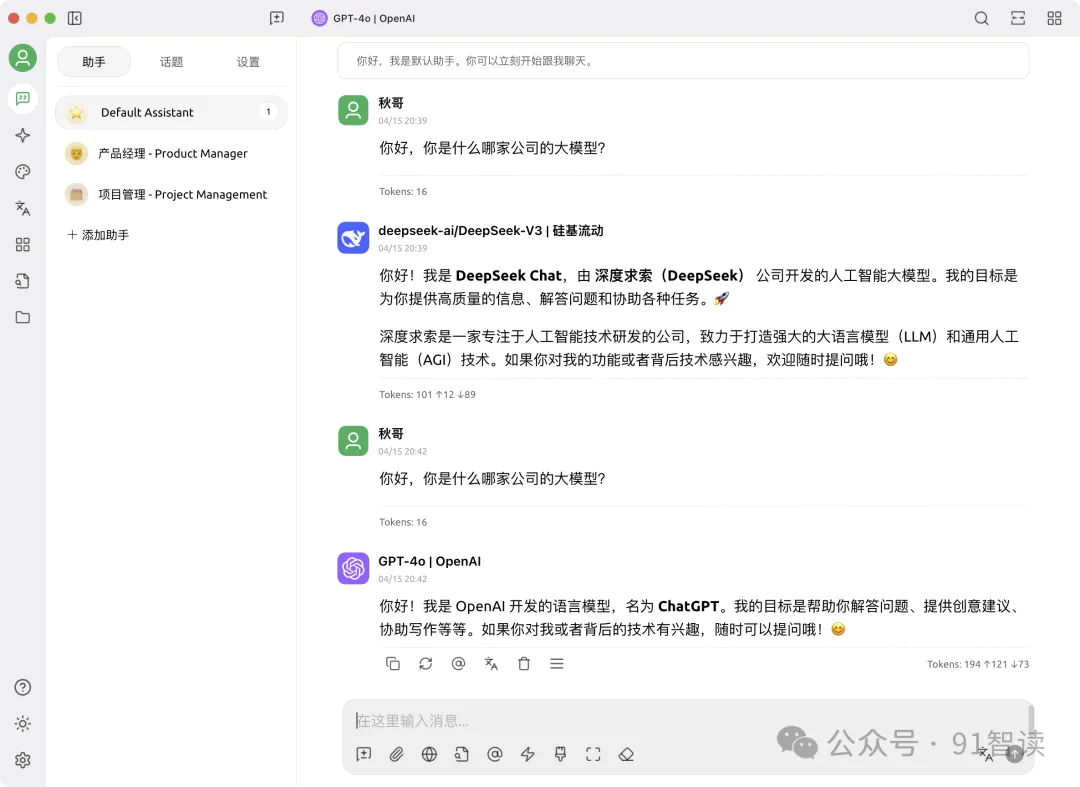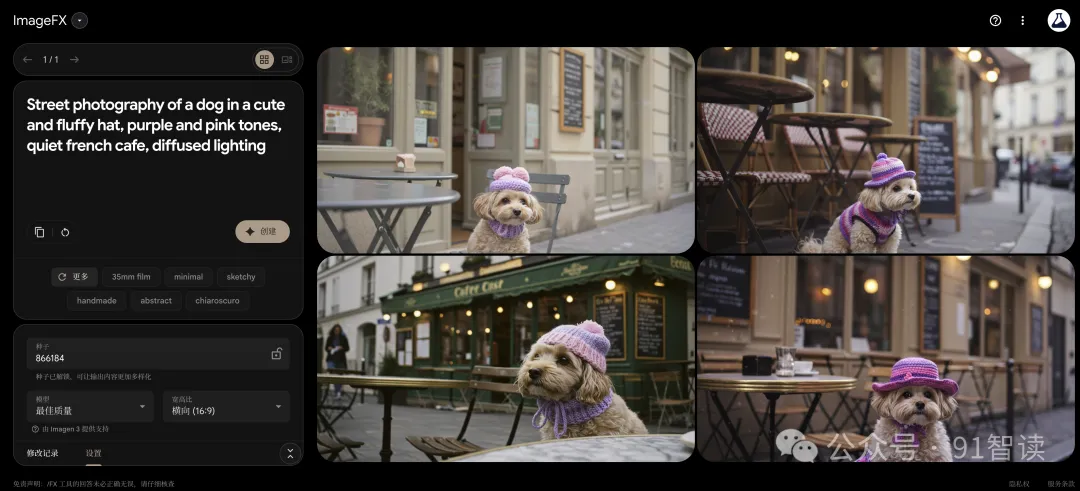Technology | AI Tools

It’s Wednesday today, let’s talk about technology. I’ll introduce several AI tools I frequently use and the reasons for choosing them. First is Cherry Studio, let’s look at a screenshot:
 Cherry Studio conversation interface
Cherry Studio conversation interface
With so many AI tools available, why did I choose this one? Here are the key features that attracted me:
- Native Client: Supports Mac and Windows systems, download and use immediately.
- Data Privacy: Not a SaaS service
- LLM Forwarding: Connects to domestic and international large language models, especially suitable for forwarding international models. (Easily achieve GPT-4o access freedom)
- Data Synchronization: Supports WebDAV and Jianguoyun, convenient for synchronizing data across multiple computers.
Of course, this software has many more features. If you’re interested, you can download and try it out.
Before this, I was using LobeHub, deployed as a container on my home Unraid NAS. Although deployment was simple, multi-endpoint data synchronization required multiple services, and I never had time to properly set it up.
Better tools will certainly appear in the future, but the key is not how powerful these tools are, but whether they can meet your needs, or to ask a deeper question, do you understand your own needs?
If you just need to solve routine problems, domestic large language models are sufficient, such as DeepSeek and Tongyi Qianwen. If you want to conduct market research and competitive analysis, the domestic “Mita” is a good choice. It recently launched a one-click interactive page generation feature, greatly improving user experience and data readability.
For global data analysis, I recommend Google’s Gemini 2.5 and Grok 3. The free quotas for these two services are currently sufficient for daily use.
Next, I’ll summarize and compare several free AI services I commonly use, hoping it will be helpful to you.
General Capabilities
| Feature | Mita | Kimi | Gemini | Grok |
|---|---|---|---|---|
| Internet Access | ✅ | ✅ | ✅ | ✅ |
| Thinking | ✅ | ✅ | ✅ | ✅ |
| In-depth Research | ✅ | ❌ | ✅ | ✅ |
| Knowledge Base | ✅ | ❌ | ❌ | ❌ |
| Image Generation | ❌ | ❌ | ✅ | ✅ |
Knowledge Base
The knowledge base here refers to uploading PDFs or other file formats, which allows you to easily search the content in these materials and summarize them through large models. I particularly favor two services:
- Mita: Focuses on in-depth research and data analysis, very suitable for research papers.
- NotebookLM (Google): Analyzes data through large models, I usually use it to analyze foreign books.
Image Generation
- ImageFX (Google): From my testing, the results are second only to Midjourney. Prompts cannot be in Chinese. I generate all my official account images using this service.
- GPT-4o (OpenAI): The recently popular Studio Ghibli animation style images are all generated using this service. Free users can generate 3 images per day.
- Sora (OpenAI): Besides generating videos, it can also generate images.
I haven’t recommended other domestic tech giants’ AI services mainly because after testing, the product experience is poor, bloated, and overly fancy. Below is the Keling AI image generation interface:
 Keling AI image generation page
Keling AI image generation page
Now let’s look at Google’s ImageFX interface:
 ImageFx image generation page
ImageFx image generation page
Conclusion
Current large models and related products are iterating rapidly. Prioritize products from major domestic and international companies; first, to avoid pitfalls, and second, because their free quotas are generally sufficient.
If you have quality requirements, there’s no need to hunt for freebies everywhere. Just purchase paid services such as Cursor and large model forwarding services. Next time, I’ll talk more about large model forwarding services. With Cherry Studio, you can use all the large model services available on the market.
👇Scan the QR code with WeChat to follow “91WiseRead” for daily updates and growth together.

👇Welcome to add me as a WeChat friend to discuss growth stories together.
